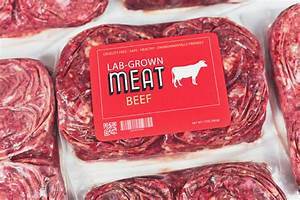Endotoxin Contamination of Lab-Grown Meat

A recent research paper released by Cold Spring Harbor Laboratory makes public for the first time (to my knowledge) the dangerous endotoxins released during the production of lab grown meat. According to the paper, endotoxins, well know for their role in numerous chronic and autoimmune diseases, are a critical component of the outer membrane of Gram-negative bacteria used to produce artificial meat.
In a section entitled “The Endotoxin Challenge,” the paper minimizes the risk of these lab-produced endotoxins to human beings, by explaining numerous techniques used to “reduce” their concentration:
The Endotoxin Challenge
These TEAs highlighted many of the technical challenges related to ACBM production, but growth medium refinement was identified as one of the most important considerations for nearterm analysis. One aspect of this refinement is the endotoxin reduction/removal for each growth medium component. Endotoxins, also known as lipopolysaccharides (LPS) are a critical component of the outer membrane of Gram-negative bacteria. Endotoxins contain a hydrophilic polysaccharide fraction, which is covalently bonded to a hydrophobic lipid known as lipid A (Magalhães et al., 2007). Gram negative bacteria are ubiquitous to the environment and are commonly found in tap water (Vaz-Moreira et al., 2017). In cell culture the presence of endotoxin can have a wide variety of effects. For example, at an endotoxin concentration as low as 1 ng/ml it reduced pregnancy success rates by 3 to 4-fold during in vitro fertilization of human IVF embryos (Dawson, 1998; Fishel et al., 1988; Snyman & van der Merwe, 1986). Gram negative bacteria shed small amounts of endotoxin into the environment when they proliferate and shed large amounts when they are inactivated (Corning, 2020).
Animal cell culture is traditionally done with growth medium components which have been refined to remove/reduce endotoxin (Corning, 2020). The method of endotoxin reduction or elimination is highly dependent upon the properties of the substance being purified (EMD Millipore, 2012). There are a multitude of methods employed for the separation of endotoxin from growth medium components and these include use of LPS affinity resins, two-phase extractions, ultrafiltration, hydrophobic interaction chromatography, ion exchange chromatography, and membrane adsorbers (Magalhães et al., 2007). In turn, the use of these refinement methods contributes significantly to the economic and environmental costs associated with pharmaceutical products since they are both energy and resource intensive (Wernet et al., 2010).
The paper’s authors seem more concerned about the environmental cost of removing endotoxins from lab-grown meat. I myself am more concerned about the potential harm to human health. I also have no confidence whatsoever in government regulatory regimes to ensure that lab-grown meat will be free of disease-causing endotoxins.
Over the past 10 years, researchers have identified numerous chronic and auto-immune diseases caused by the endotoxins released by gram negative gut bacteria: coronary artery disease, Crohn’s disease, ulcerative colitis, rheumatoid arthritis, Parkinson’s Disease, obesity and type 2 diabetes, and autism, Alzheimer’s schizophrenia, depression, bipolar disorder and chronic fatigue.
The Most Revolutionary Act
- Stuart Jeanne Bramhall's profile
- 11 followers



